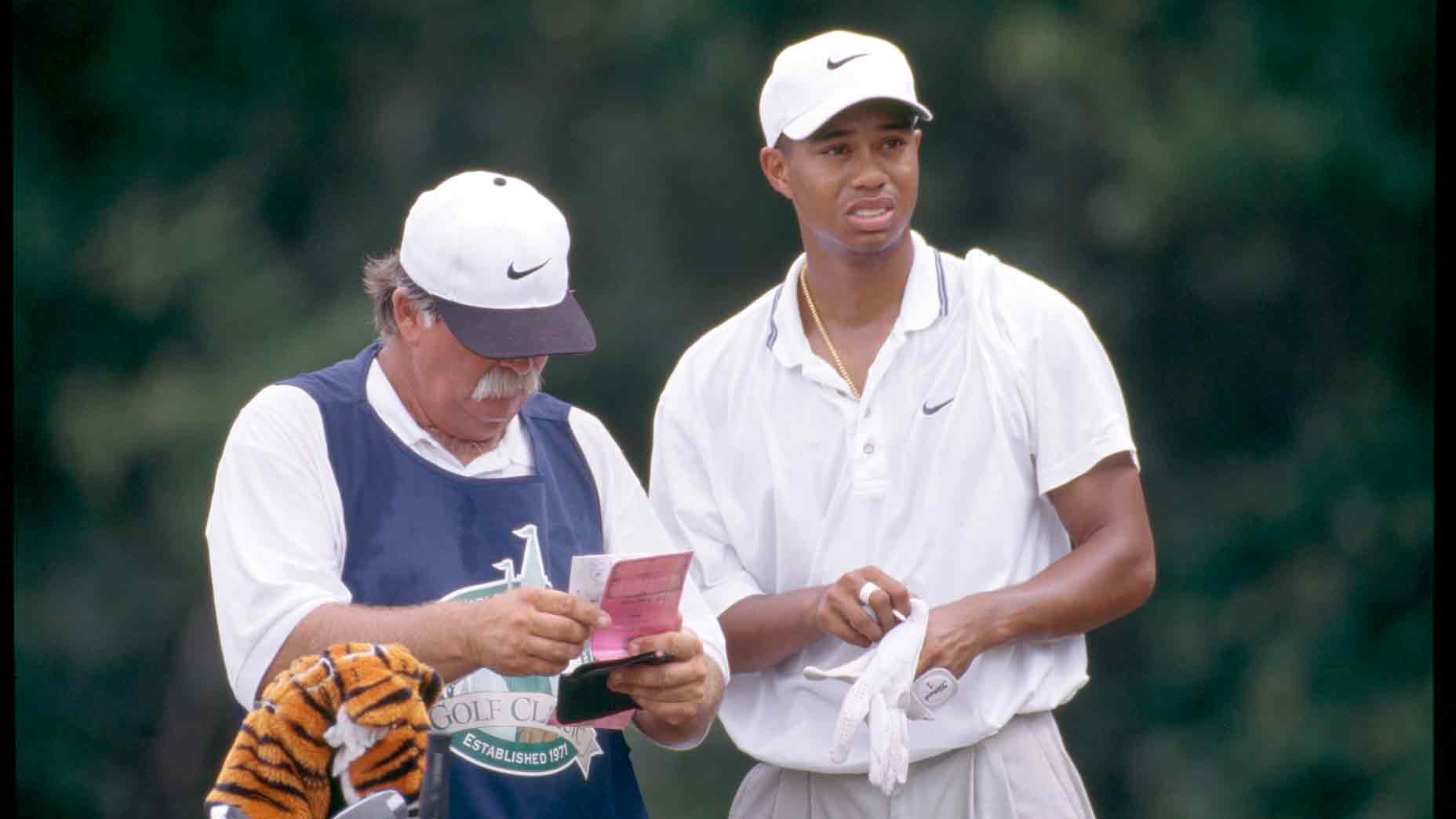
Whether you go for it or lay up at Anstruther’s 5th, the hole will give you all you can handle.
Alan Bastable
A few years ago, Anstruther Golf Club, a whimsical nine-holer about a 20-minute drive south of St. Andrews, Scotland, played host to an event for competitive local amateurs, largely single-digit- and plus-handicaps. Among the contestants, who twice navigated the hilly, par-31 seaside loop, was Stuart Birrell, a 4-handicapper from Dunfermline, just north of Edinburgh. Birrell was in a nice rhythm — he had parred his last four holes — when he arrived on the elevated tee at the par-3 5th for the second time.
Like most avid Scottish golfers, Birrell knew of the hole’s fearsome reputation. If he didn’t, there was a reminder right there on a silver plaque by the tee box, which trumpets an honor bestowed upon the 5th by a British golf magazine in 2007:
Voted by Today’s Golfer
Britains (sic) Hardest Par 3
Tipped out, the hole plays 245 yards to a narrow fairway that works left to right but also awkwardly pitches hard left toward out-of-bounds stakes and the rocky waters of the Firth of Forth. A bluff flanks the other side of the hole, at the end of which the half-blind green is tucked around a corner. The Rockies, as the hole is called, might sound more like a short par-4, and, in effect, it is — or at least that’s the sensible way to play it. The green is virtually impossible to hit, and if you do manage the feat, your ball is likely to catch the right-to-left slope and trundle off.
Then again, what fun is laying up?

The typical landing zone at the 5th, should you be lucky enough to find it.
Alan Bastable
The ideal tee shot calls for a high soft fade that cuts enough to turn the corner but (1) isn’t so high that the wind has its way with it, and (2) doesn’t cut so much that it carries into or over the bluff. You can also throw a draw at the right edge of the green, but any shot even slightly overcooked runs the risk of bounding off the fairway and into the watery, rocky abyss.
Driver in hand, Birrell settled in over his tee shot and … pull-hooked it into the rocks.
No shame in that. Happens all the time here.
He reloaded and topped his next shot into a gorse bush, from which he was unable to recover his ball.
OK, yeah, not the best start.
Now hitting five off the tee, Birrell yanked another drive into the drink.
This is getting uncomfortable.
Away went the driver and out came a 6-iron — and, with it, more horrors. Another O.B. hook. A knifed swing into another gorse bush. And then another. At this point, the comedy of errors was beginning to draw laughter both from Birrell’s playing partner and Birrell himself. Gallows humor. With swing No. 11, Birrell finally found the fairway, but he was still just getting started.
He chunked a wedge 20 yards short of the green, advanced his next pitch just five yards, then half-shanked his 14th shot to the back-right of the putting surface — above the hole, which is not where you want to be on the sloping green. He gassed that putt past the cup and nearly off the green, leaving himself 15 feet back up the hill. A tidy two-putt from there and Birrell had made a 17. Yep, a quattuordecuple-bogey.

One of these is not like the other.
Courtesy Anstruther
They don’t sell “I Survived The Rockies” T-shirts in the Anstruther pro shop, partly because they don’t sell much of anything beyond balls, tees and maybe a few gloves, and partly because few visitors do survive the hole.
The course was bustling last Saturday morning when three colleagues and I paid a visit. The Open Championship, which was under way just up the road at the Old Course, had helped fill the tee sheet. “It’s the busiest we’ve been since Covid,” clubhouse manager Matt Maclachlan told me. “It just feels normal again.”
But even without the Open, Anstruther has been making a name for itself, which isn’t easy to do in this nook of the golf world. Like actors in Hollywood or steakhouses in New York, golf courses in and around St. Andrews are in good company. The volume and variety of courses in Fife is remarkable, including headliners like the Old Course and Kingsbarns; seaside charmers like Elie and Crail; plus dozens more delightful offerings with which you might be less familiar, like Ladybank, Scotscraig and Aberdour.
To attract bookings from out-of-towners in such a crowded market, courses in the region must lean into what sets them apart, be that their history, their setting or an inimitable quirk, like the former submarine periscope that stands sentinel by the 1st tee at Elie.
Anstruther has just such a distinction, even if it’s one that leaves golfers quaking in their soft spikes.
GolfTV has profiled the 5th hole. So, too, have British YouTubers Rick Shiels and Matt Fryer. The American author Tom Coyne sung Anstruther’s praises in his book A Course Called Scotland.
And then there was Beef Johnston’s visit.
Last year, the British pro and BBC golf broadcaster Andrew Cotter played Anstruther’s 5th hole while shooting a DP World Tour video series in which they visited 18 courses on Scotland’s east coast in 18 hours. In the video, you can watch Beef missing the green right and then duffing a chip, leading to a two-putt bogey. But a clip that was edited out of the final cut more colorfully illustrated his feelings about the hole. As Beef stood on the tee and surveyed the terrain before him, he said, “How the f— do you play this?”
How indeed.
“The fact that even Beef couldn’t par it sure has helped to boost the hole’s notoriety,” Maclachlan said.
The 5th hole may bring sadists and curiosity-seekers through the door, but the rest of the course is also well worth the peak-season £20 price of admission. The 278-yard par-4 1st/10th climbs up one of the steepest pitches you’ll find on any opening hole, helping to build anticipation for the scenic holes on higher ground that follow; the nervy 128-yard par-3 6th/15th plays to a tabletop green that accepts only crisply struck iron shots; the closing 238-yard par-3 9th/18th, with views of the rooftops in the little town of Anstruther, plays back down the same slope that the 1st/10th hole ascends. It’s all so quirky and fun and memorable.
Of first-time visitors, Maclachlan said, “The Rockies is the big draw but once they have played the whole course, they say, ‘That’s a great wee course to play.’ Once they’ve played it, they say they’ll come back.”

The tabletop green at the 6th.
Alan Bastable
On the day my colleagues and I visited, the wind was up, the air was cool and, as we navigated our way toward the 5th, the excitement was building.
The hole first comes into view from the tee box on the neighboring par-4 4th, which sits on the bluff above the 5th green and runs in the opposite direction. But from that vantage point, that’s about all you can see of the hole. A sneak peek.
The hole doesn’t reveal itself until you’re on the wind-whipped tee, and even then, the green isn’t entirely in view.
No one needs to hear play-by-play of our conquests, but I will tell you that after a solid tee shot that caught the right rough and bounced back into the fairway, I had about 30 yards left into the green. From there, I lobbed a wedge to the back-right portion of the putting surface that caught the slope and crept back down toward the hole. When the ball stopped, I had a slippery six-footer for a par I could crow to my grandchildren about. Hardest hole, schmardest hole.
I stepped into the putt, giddy at the thought of making a 3. A ball or two outside the left edge felt about right. I drew back my putter and … ugh, never sniffed the hole.
Bogey.
But, hey, beats a 17.








